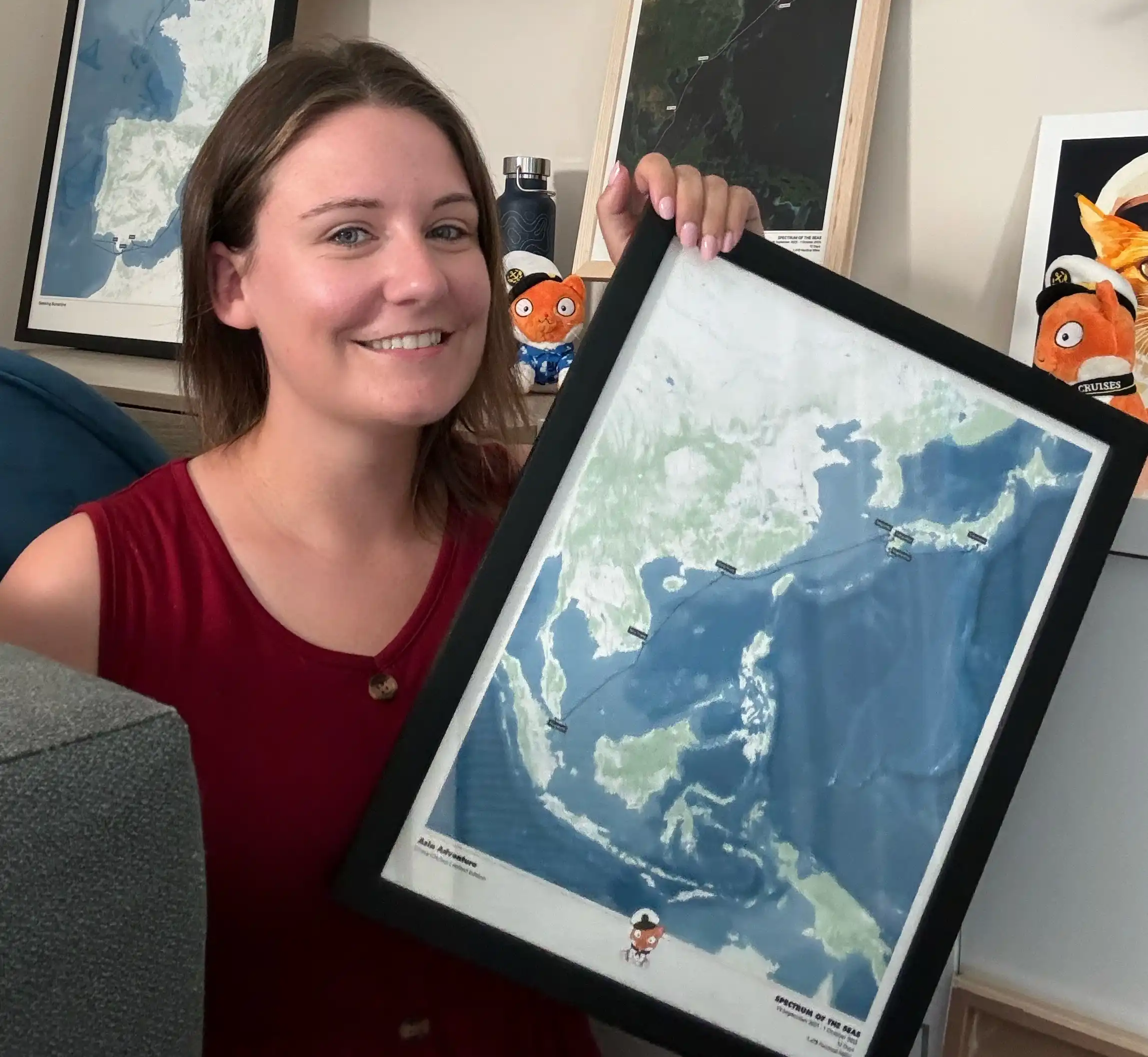You may have seen pictures of Cruise Ships and Ocean Liners in dry dock undergoing renovation, or being built in the shipyards. You may have wondered why they are painted a different colour – often red – below the water line.
There is a very important reason why they are painted differently below the waterline and I was lucky enough to go under one ship, the MSC Bellissima to find out.
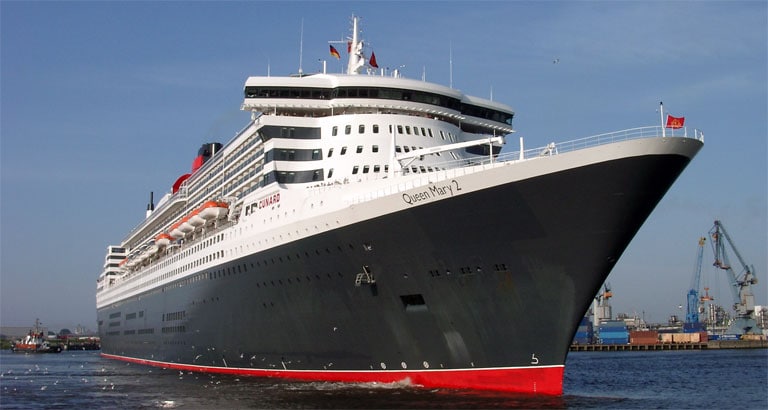
The area underneath the water on a ship is known as the ship’s “draught.” This is the area traditionally painted red.
Special “anti-fouling” paint must be used here, to avoid the underside of the ship getting covered with barnacles, seaweed and other marine growth.
Anti-fouling paint is this colour because red paint was:
- Cheap
- Durable
- Traditional
What Was The Problem?
Going back hundreds of years, ships were made from timber – often hardwoods like oak, teak or mahogany, because they were the most hardwearing.
The ocean is a very harsh environment. Wooden ships in the water would gather seaweed, barnacles, and other marine growth – such as ship “worms.”
This would slow the ship down when she sailed.
Ship “Worms” Damaged Wooden Vessels
Shipworms are a bit like tubes. Their head tunnels into the wood of the ship’s hull, and their gills at the other end absorb oxygen from seawater.
They aren’t actually worms – they are a wormlike clam that can grow as long as two metres!
They damage the wooden ship by burrowing their shell-encased head into the hulls of ships and grinding the cellulose into particles with their tiny shell teeth. Sounds terrible!
To prevent damage from shipworms, the hulls were often clad in a thin copper plate.
This plate still had to be regularly scraped to remove barnacles and other marine growth.
Iron Hulled Ships – Better but Not Great
Large ships and Ocean Liners couldn’t be damaged by shipworms – but of course still suffered from barnacles, seaweed and other marine growth.
Marine growth on the hull of a ship creates drag that slows it down, It can reduce manoeuvrability and impact how much fuel is needed.
If left untreated, the growth can spread to moving parts and openings and cause all sorts of problems. Obviously, ship owners don’t want to be spending extra money on additional fuel for every voyage.
How quickly and to what extent this marine growth builds up depends on whether the ship is stationary or moving, and the water conditions.
Other factors that affect marine growth buildup are:
- The strength of the tide
- The water temperature
- How much salt is in the water
- The amount of light
Large ships can’t be removed from the sea regularly to be scraped, they would have to go into dry dock.
This is costly and time-consuming. A solution needed to be found.
Anti-Fouling Paint Was Developed
Commercial anti-fouling paint was developed around the 1860s
These anti-fouling paints were very toxic – containing ingredients like Shellac, Resin, Copper Sulphide, Mercury and Arsenic.
These compounds slowly “leached” into the seawater, preventing barnacles and other marine life from attaching themselves to the ship.
This paint really wasn’t very good for the environment…
“Studies have shown that these compounds persist in the water, killing sealife, harming the environment and entering the food chain.”
The International Maritime Organization
In the 1960s more environmentally friendly paints started to be developed, and by the early 1990s, laws were put in place to stop toxic chemicals from being used in anti-fouling paint.
Why Is Anti-Fouling Paint Traditionally Red?
When anti-fouling paint was first developed in the 1860’s the cheapest and easiest paint pigment to use was “Venetian Red.”
Venetian Red is a naturally occurring pigment made from Iron Oxide found in rocks.
It was very cheap, and extremely durable – very important when making anti-fouling paint – and lots of other things too.
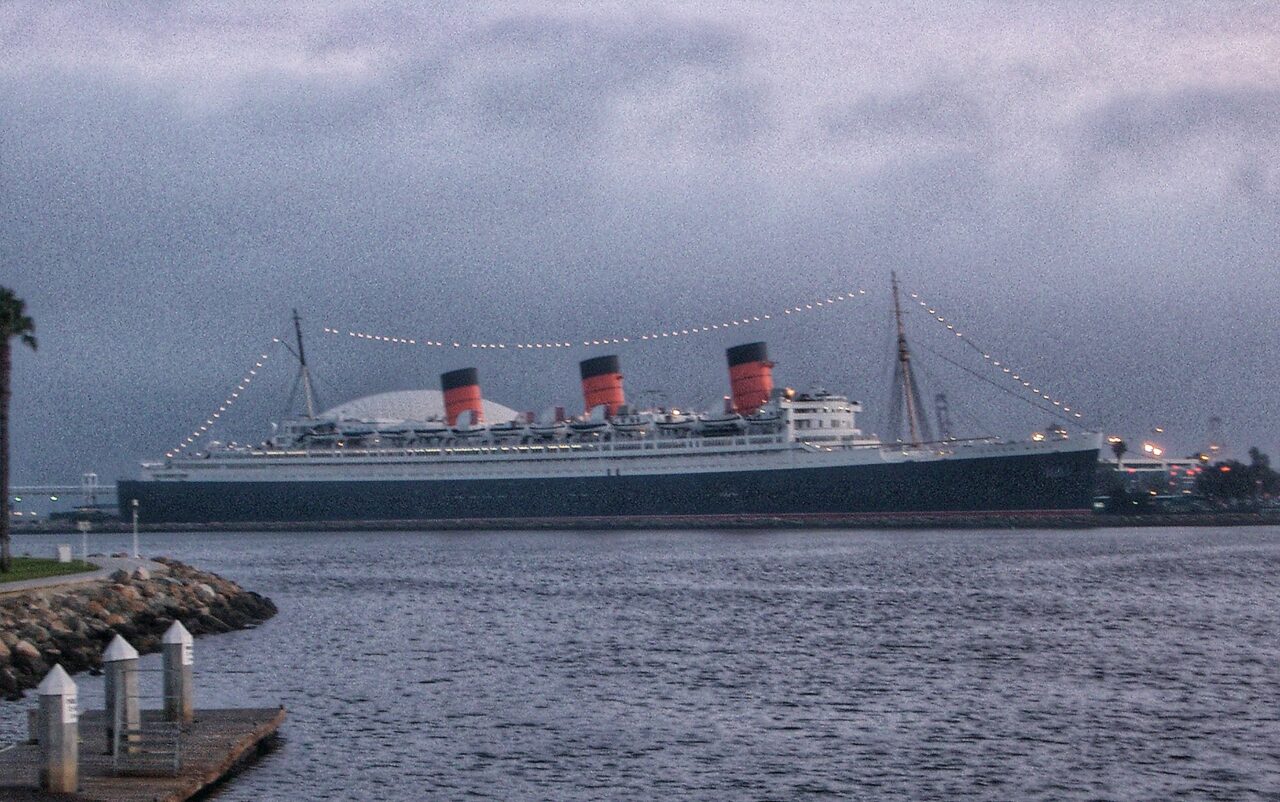
The British even used Venetian Red pigment to dye their army uniforms – hence the distinctive Red Coats worn by the army from 1645 until the 19th Century.
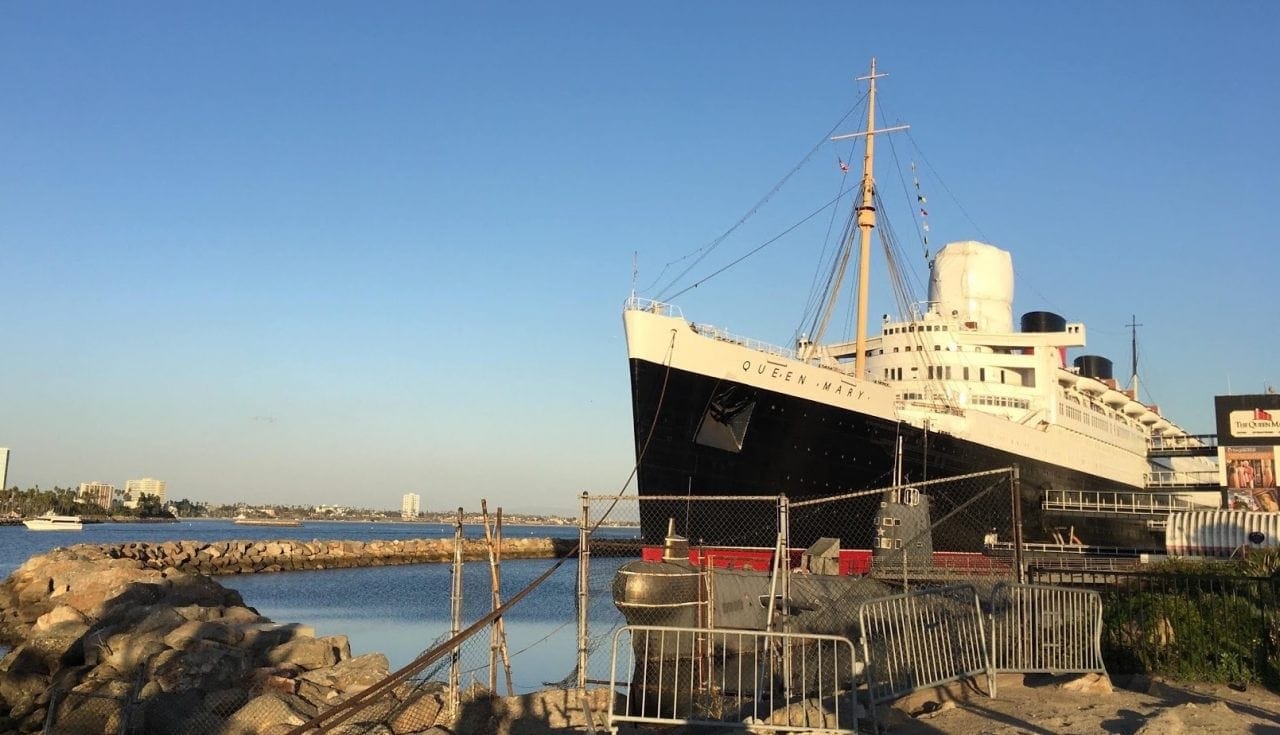
Types of Paint Now Used
Organic biocides are now in anti-fouling paint. This does less environmental damage than the paints used in the past.
There are two main types of paint used:
Soft Coatings
These are designed to wear off over time, exposing fresh biocides to the water. The paint literally flakes off over time, which does cause environmental issues.
These paints normally have to be reapplied every one to three years.
Hard Coatings
Hard coatings are durable and last longer. Biocides are still released into the water, and the outer layer gets worn away with time.
Some hard paint includes Teflon and Silicone which are too slippery for growth to stick to successfully.
Although marine growth will eventually happen over time, when it does it is easier to clean off.
I Went UNDER The MSC Bellissima
As part of her launch, I was invited to tour the ship in the shipyard.
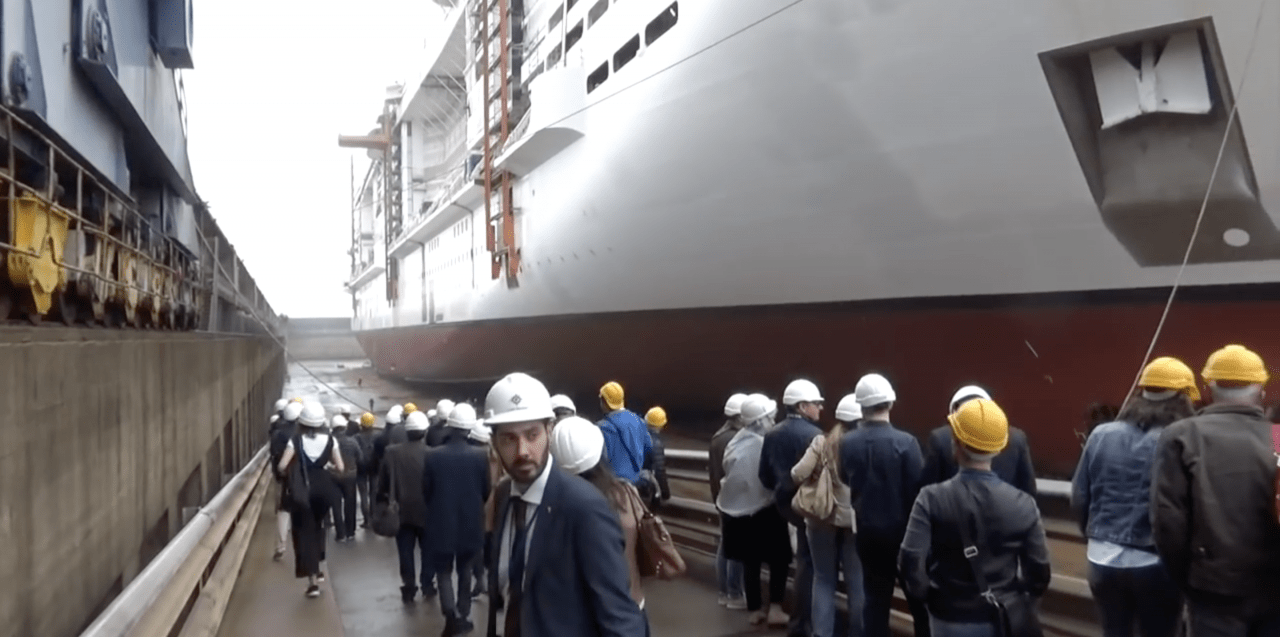
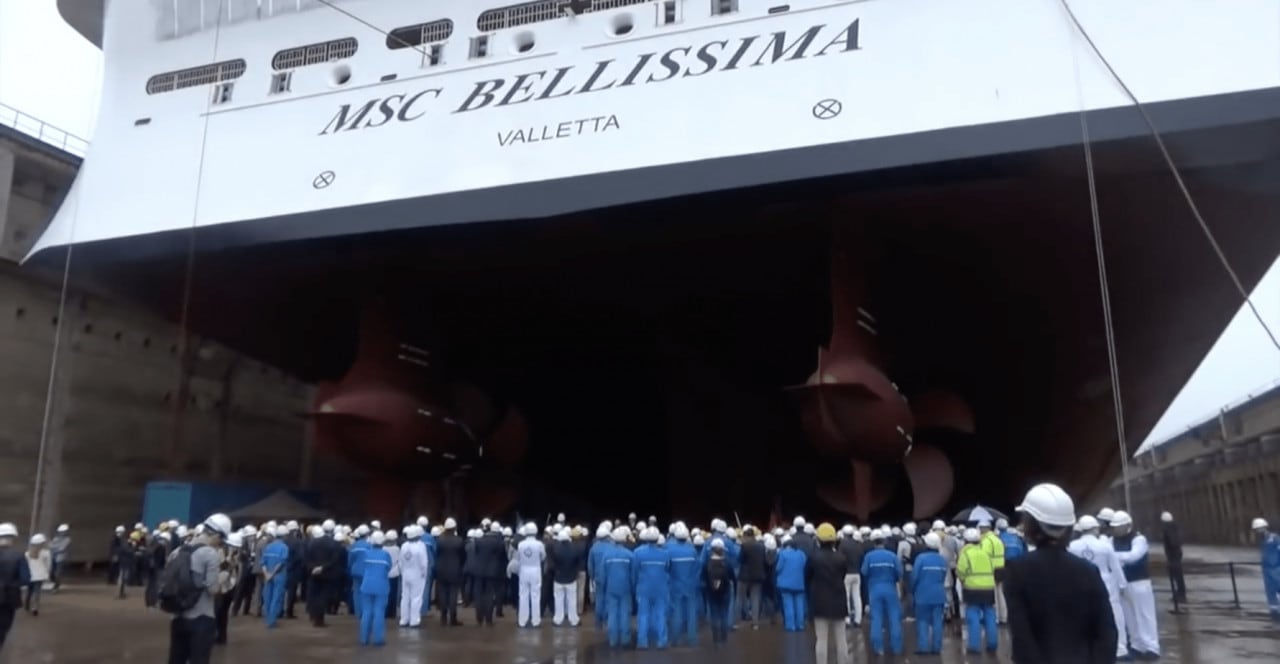
Find out why the underside of cruise ships and Ocean Liners are the shape they are here:
Cruise Ships, What Shape Are They Below the Water?
Does Anti-Fouling Paint Still Need To Be Red?
No, anti-fouling paint can now be made in any colour.
Because red was always the colour used, it has become a tradition.
There is no reason why the paint now has to be red, the Q.E.2 for example had blue anti-fouling paint and a blue hull in the 1970’s – before reverting back to the traditional red colour.
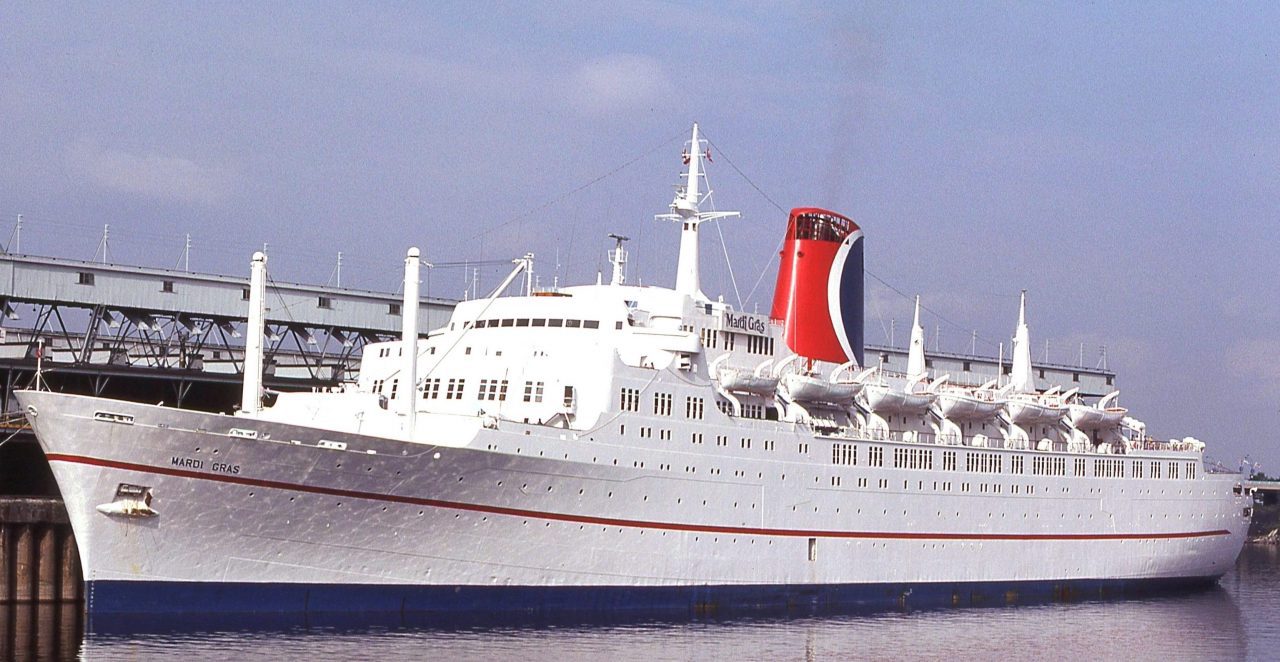
What’s A “Boot Topping” Paint Layer?
Some ships, noticeably Cunard ships, have a “boot-topping” paint layer.
This is a band of paint between the water line of a ship when fully loaded and when unloaded.
So you may be able to see some of this red line by the water on the side of the ship.
The paint on the ship that is nearest the water receives lots of knocks and scrapes from tender boats and docking. The boot topping layer will give additional protection against these scuffs.
Cunard paints their ships with an extra boot topping layer on top of the anti-fouling paint, to give it added durability. It also makes their ships look smart and distinctive.
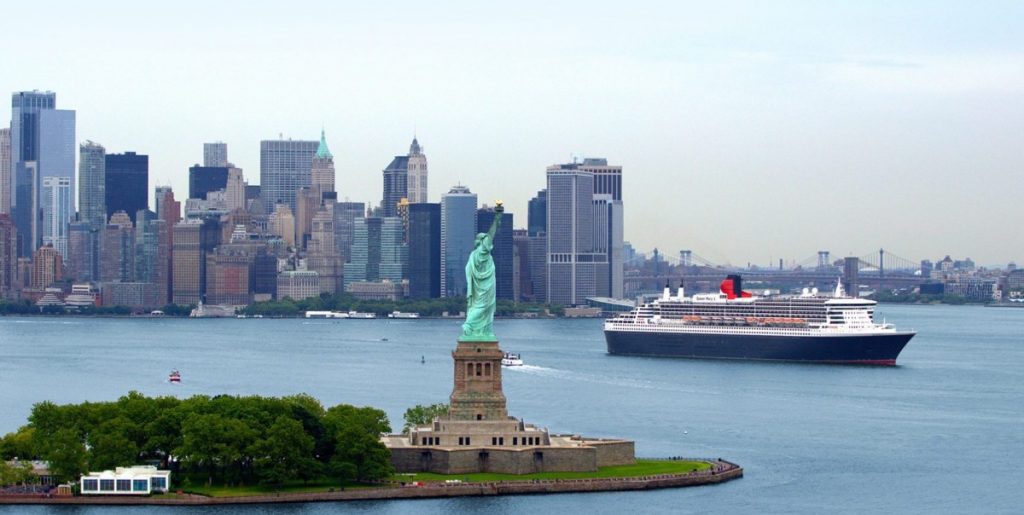
Before You Go
Find out the important differences between Cruise Ships and Ocean Liners here:
Cruise Ships vs Ocean Liners – Measurable Differences You Need to Know
Find out about the interesting things that were once allowed on ships, but are now banned below:
6 Things Once Allowed on Cruise Ships But Are Now Banned (For Good Reason!)
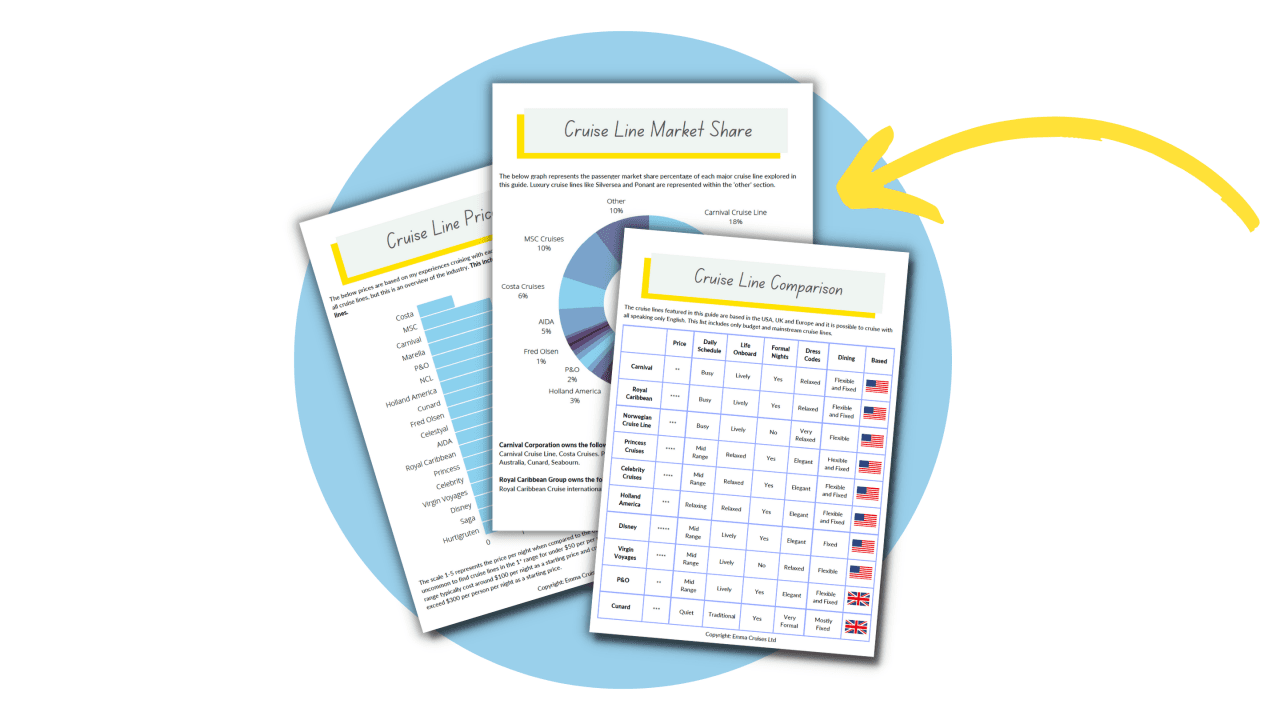
Free Insiders Cruise Line Guide
Ever wondered how the mainstream cruise lines compare? Cruise lines won’t tell you this, but I will.
This FREE guide shows you everything you need to know to find your perfect cruise line.
Whenever I take a cruise I order a print of my trip. It uses the real satellite data from the cruise and is always a great conversation starter!
I'm building an impressive collection...
Code EMMACRUISES will get you 10% off

